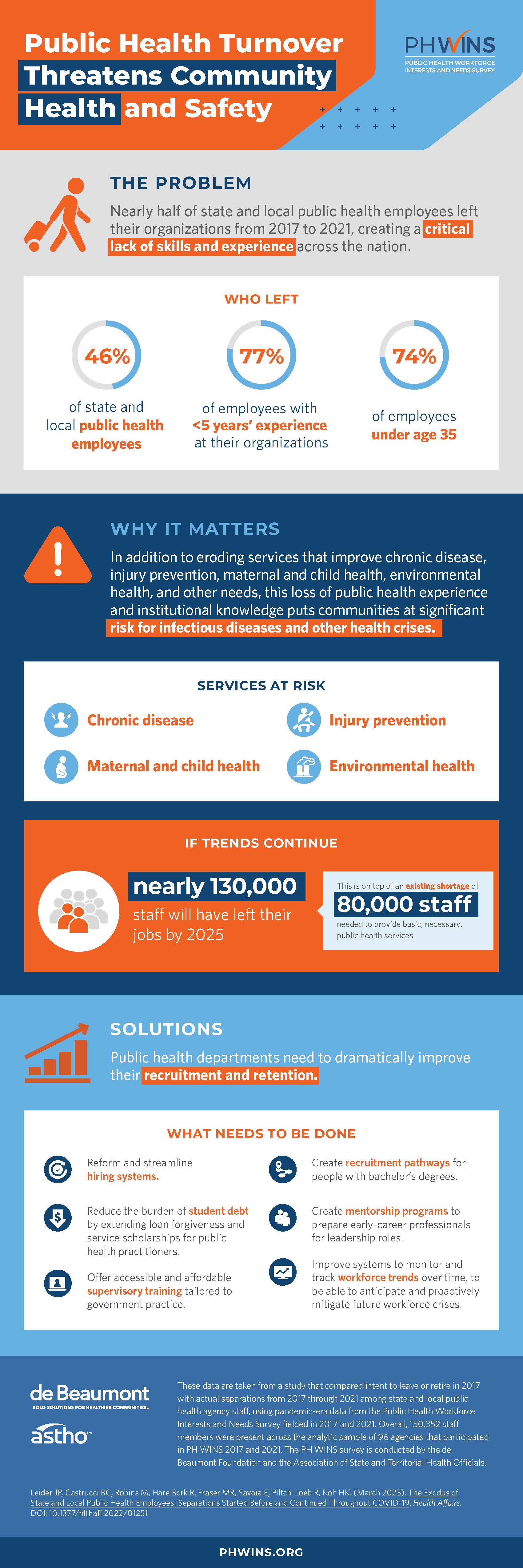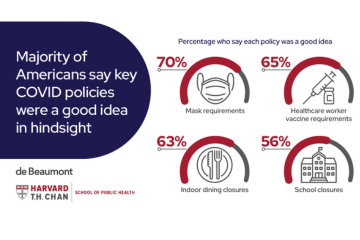According to a recent analysis of data from the Public Health Workforce Interests and Needs Survey (PH WINS), nearly half of state and local public health employees left their jobs between 2017 and 2021, exacerbating an existing workforce shortage and causing a critical lack of skills and experience that puts communities at risk.
The study, published today in Health Affairs, compared intent to leave or retire in 2017 with actual separations through 2021 among state and local public health staff at agencies that participated in the PH WINS survey in both years. The study authors found that 46% of state and local employees left their organizations during that time – a number that rose to 74% among employees under age 35 and 77% among employees with less than five years’ experience.
“Such rates of departure trigger not just major expenses but also broader societal impact through the loss of critical public health experience and institutional knowledge during a health crisis,” the authors wrote. “While the private sector has also witnessed such pandemic-related employee losses, this outsized loss within the state and local governmental public health workforce uniquely represents a threat not only to the future of the nation but also its safety and economic prosperity.”
In addition to eroding services that improve food safety, maternal and child health, injury prevention, and other needs, this loss of public health experience and institutional knowledge puts communities at risk for new infectious disease threats and other health crises. If the trend continues, nearly 130,000 staff will have left their jobs by 2025. This is on top of an existing shortage of 80,000 full-time staff needed to provide adequate infrastructure and foundational public health services.
“Public health was already experiencing a wave of delayed retirements, and now, we’re seeing an early exodus from the workforce among people under 35,” said Brian C. Castrucci, DrPH, president and CEO of de Beaumont and an author on the study. “We’re losing early-career professionals at the same time that senior leaders are leaving in droves. These two trends are colliding in a perfect storm that leaves us extremely vulnerable to the next public health threat.”
How Health Departments Can Improve Recruitment and Retention
Solutions to improve recruitment include:
- Reform and streamline governmental hiring systems, through partnerships between national public health organizations and state-, county-, and city-level membership groups for governmental employees
- Create recruitment pathways for people with bachelor’s degrees to enter government service, using existing programs for candidates with advanced degrees as a model and foundation
Solutions to improve retention include:
- Offer accessible and affordable supervisory training tailored to government practice, which allow high performers to continue to progress within their organizations
- Create mentorship programs to integrate new hires into governmental roles and prepare early-career professionals for leadership roles
- Reduce the burden of student debt by extending loan forgiveness and service scholarships for public health practitioners, providing a direct benefit to employees and indirectly augmenting their salaries
In addition, it is critical to improve systems to monitor and track workforce trends over time, to be able to anticipate and proactively mitigate future workforce crises.
“Our nation’s future depends on successfully rebuilding a robust and reinvigorated public health workforce,” said Howard K. Koh, MD, MPH, Harvey V. Fineberg Professor of the Practice of Public Health Leadership at Harvard and an author on the study. “Our lives and livelihood literally depend on it.”





